This article needs additional citations for verification .(May 2020) |
The 2nd Guards Corps was a formation of the Imperial Russian Army that saw service in World War I. It was founded in November 1915 and disbanded in early 1918.
This article needs additional citations for verification .(May 2020) |
The 2nd Guards Corps was a formation of the Imperial Russian Army that saw service in World War I. It was founded in November 1915 and disbanded in early 1918.
It participated in military operations on the South-Western (1915 - November 1916, April 1917 - 1918) and Western (November 1916 - April 1917) fronts.
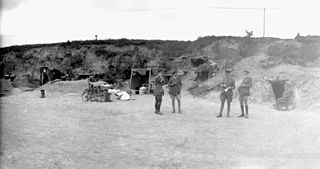
The Canadian Corps was a World War I corps formed from the Canadian Expeditionary Force in September 1915 after the arrival of the 2nd Canadian Division in France. The corps was expanded by the addition of the 3rd Canadian Division in December 1915 and the 4th Canadian Division in August 1916. The organization of a 5th Canadian Division began in February 1917 but it was still not fully formed when it was broken up in February 1918 and its men used to reinforce the other four divisions.

The Russian Caucasus Army of World War I was the Russian field army that fought in the Caucasus Campaign and Persian Campaign of World War I. It was renowned for inflicting heavy casualties on the opposing forces of the Ottoman Empire, particularly at the Battle of Sarikamish. It was also known for its extremely diverse ethnic composition, consisting of units from throughout the Russian Empire and both soldiers and officers from the many ethnic communities settled since the 1877-78 Russo-Turkish War in the militarily administered Kars Oblast in the Russian Transcaucasus. These included Georgians, Caucasus Greeks, and Armenians - the latter in particular strongly represented among both the soldiers and senior officers - as well as ethnic Russians and Ukrainians.
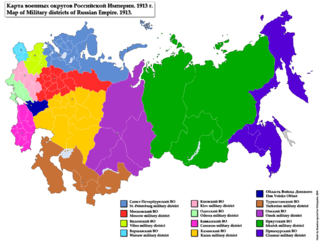
The Petersburg Military District was a Military District of the Russian Empire originally created in August 1864 following Order B-228 of Dmitry Milyutin, the Minister of War of the Russian Empire. The order, signed on 10 (22) August established that "for local control of the Ground Armed Forces and military establishments, are formed ... Military-regional administrations in the following ten military districts" of which one was Petersburg. The District's forces gained combat experience in the Russo-Turkish (1877–1878) and Russo-Japanese (1904–05) wars. Finland Military District was merged into the Petersburg District in 1905.
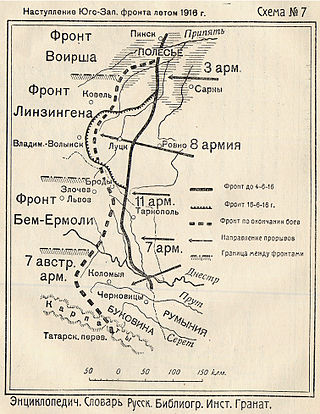
The Russian Third Army was a World War I Russian field army that fought on the Eastern theatre of war.

The Romanian Front was an army group level command of the Imperial Russian Army and the Romanian Army during the First World War.

The Southwestern Front was an army group of the Imperial Russian Army during World War I as part of the Eastern Front war theater.

The 10th Army was a field army of the Imperial Russian Army during the First World War.
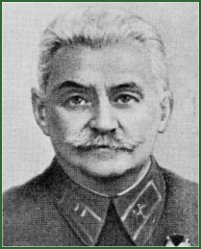
Dmitry Nikolayevich Nadyozhny was a commander in the Russian Imperial Army who later joined the Red Army. He rose to lieutenant general and fought in the First World War and Russian Civil War, commanding the Red Army's northern front in the latter.
The 12th Infantry Division was an infantry formation of the Russian Imperial Army that existed in various formations from the early 19th century until the end of World War I and the Russian Revolution. The division was based in Lutsk in the years leading up to 1914. It fought in World War I and was demobilized in 1918.
The 19th Infantry Division was an infantry formation of the Russian Imperial Army.
The 25th Infantry Division was an infantry formation of the Russian Imperial Army. It was a part of the 3rd Army Corps.
The 26th Infantry Division was an infantry formation of the Russian Imperial Army.
The 27th Infantry Division was an infantry formation of the Russian Imperial Army. It was a part of the 3rd Army Corps.
The 4th Cavalry Division was a cavalry formation of the Russian Imperial Army.
The 17th Army Corps was an Army corps in the Imperial Russian Army.
The 2nd Grenadier Division was an infantry unit in the Imperial Russian Army as part of the Grenadier Corps. Its headquarters was located at Moscow. Notable engagements of the division include the French invasion of Russia.
The 2nd Cavalry Corps was a cavalry corps in the Imperial Russian Army.
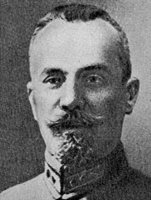
Vladimir Alexandrovich Olderogge was a Russian and Soviet military leader. He was commander of the Eastern Front of the Red Army.

Georgy Nikolaevich Viranovsky was a Russian commander, participant in the Russo-Japanese War and World War I, Lieutenant General, and participant in the White Movement during the Civil War (1918-1920). He was Cavalier of the Order of St. George 3rd and 4th degree.
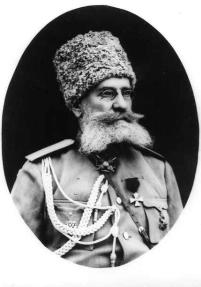
Georgy Eduardovich Bergmann was a Russian General of the Infantry who was known for organizing the Bergmann Offensive against the Ottoman Empire during the First World War. He was also a commander of the White Army during the Russian Civil War.